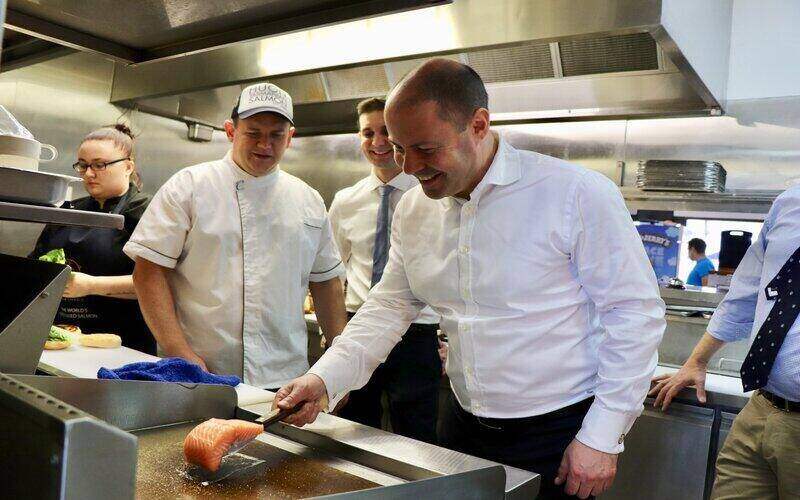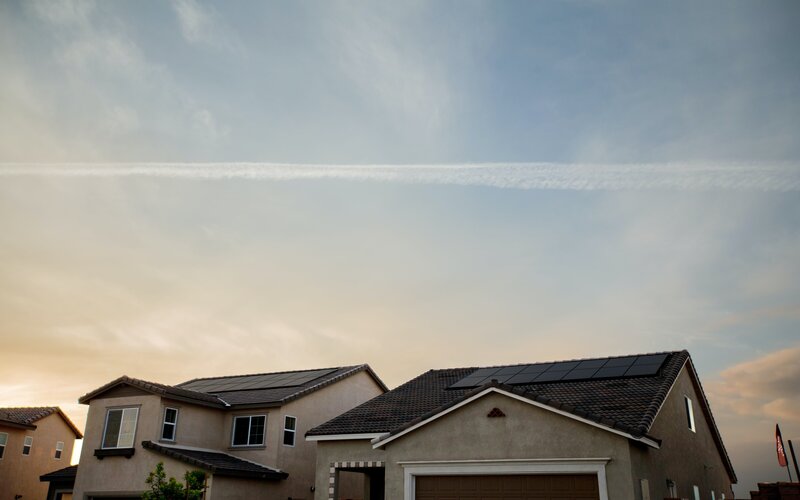Australian Treasurer Josh Frydenberg will unveil the Federal Government's pre-election budget on Tuesday evening, hanging the government's hat on Australia's economic rebound post-COVID.
CommBank's Head of Australian Economics Gareth Aird said the backdrop for the March 2022 Budget comprises a pandemic that is largely behind us, an unemployment rate that is trending lower, rising inflation, surging commodity prices and a war in Ukraine.
"An economy 'firing on all cylinders', bolstered by a sharp rebound in production and employment, is set to deliver much higher forecast revenues and create greater financial flexibility," Mr Aird said.
Westpac economists Bill Evans and Andrew Hanlan echo this sentiment, noting the 2022 Budget will rely on a stronger economy around strong wages and employment growth and higher commodity prices boosting national incomes.
Westpac economists believe that new policy initiatives will likely be relatively modest in this Budget, yet at the same time will assist with cost of living pressures for those on lower and middle income, including those on social benefit payments.
Deficit and debt
In layman's terms, the Budget deficit essentially means the cost to fund its objectives outweighs government revenue gathered from sources such as income and other taxes.
Westpac economists said the budget deficit for 2021/22 could be lowered to $77.7 billion from a projected $99.2 billion, a $21.5 billion improvement.
"This is after incorporating $7.5 billion in new spending, with a focus on a $4 billion cost of living package, which is expected to be distributed before the May election," they said.
AMP Chief Economist Shane Oliver said the improvement in deficit reflects the budget windfall from a faster-than-expected economic recovery and higher commodity prices driving higher tax receipts and lower welfare payments only partly offset by increased spending this financial year and next.
"The budget windfall coupled with $16 billion allocated last December as 'decisions taken but not yet announced' means there is plenty of scope for the Government to announce extra short-term spending and yet still report a faster pace of deficit reduction than back in December," Mr Oliver said.
ANZ economists David Plank and Hayden Dimes note debt is expected to surpass $750 billion in 2022/23.
Tax
ANZ economists note the largest single policy will be the extension of the low-and middle-income tax offset (LMITO) through to 2022/23.
Rewinding back to November, Prime Minister Scott Morrison floated the possibility that tax relief for millions of Australians could be extended past its initial 30 June 2022 expiry.
Director of Tax Communications at H&R Block Mark Chapman said despite the suggestions from some in Government, there is no realistic chance that the Government won’t extend the LMITO, which provides a tax offset worth up to $1,080 for low- and middle-income Australians.
"Expect the low- and middle-income tax offset - that is currently scheduled to end this 30 June - to be extended for one more year, through to 30 June 2023," Mr Chapman said.
"To abolish it before an election would quite simply be electrical suicide, especially if no action is taken against the next stage of the government’s already legislated tax cuts set to take effect in 2024-25."
Despite increasing the LMITO an extra year, Mr Chapman believes this will be sold as a tax cut but said it’s a deferred tax rise.
"When the offset does finally end, everybody earning up to $126,000 will lose the amount of the tax offset, which has been a feature of the tax system since 2018-19," he said.
"Expect the government to recommit to its already legislated stage three tax cuts, which take effect from 2024, but not to bring them forward to this year."
It's expected the government will retain the smoothing of its marginal income tax brackets for the 2024-25 financial year. Under the legislated tax cuts:
- The 37% tax bracket will be abolished.
- The top 45% bracket will start from $200,000 instead of $180,000.
- The 32.5% rate will be cut to 30% for all incomes between $45,000 and $200,000.
Cost of living & inflation pressures
Westpac economists note supply shocks are leading to increases in consumer prices, pointing to a material upgrade to the inflation forecast for 2021/22, to 4.25% from 2.75%.
Further, ANZ economists are of the belief that the increased focus on cost of living pressures with inflation running at 3.5% year-on-year is likely to put pressure on the government to slow its spending.
In a pre-budget speech given late last week, the Treasurer revealed there will be further measures to support families to meet the cost of living pressures, in a targeted and proportionate way.
Mr Oliver expects this targeted relief to come in the form of one-off payments for low and middle income households to deal with current cost of living pressures.
This payment as reported in the Australian Financial Review is set to be $250; payments could be deposited into accounts before the May election.
Fuel
The Treasurer has teased a cut to the fuel excise - a 10c cut to the fuel excise could cost the government $1.5 billion in six months.
New Zealand recently cut its fuel excise by 25 cents per litre to curb inflationary pressures, with ANZ economists forecasting a drop of 50 basis points to inflation estimates for the second quarter of 2022 across the ditch.
However some believe cutting the fuel excise won’t necessarily result in lower prices at the pump.
Senior tax advocate at Chartered Accounts Australia-New Zealand Susan Franks said Australia is a 'price taker' when it comes to fuel and there is no guarantee that any cost reduction will be passed onto consumers.
Australia's fuel excise currently comes in at 44 cents per litre of fuel, and is indexed every six months.
Mr Chapman expects the rate of fuel duty to be cut in light of soaring petrol prices.
"In the great scheme of things, this will be a drop in the ocean compared to recent price rises but the Treasurer will want to be seen to be helping the great Aussie motorist," he said.
Housing affordability
With property prices recording the highest annual growth on record throughout 2021, Real Estate Institute of Australia's pre-budget submission called for a national plan for housing supply and affordability.
REIA President Hayden Groves said affordability in Australia is at its lowest point since 2008 where 45.8% of family income was required to meet mortgage repayments.
"Politicians cannot talk about affordability without talking about supply," Mr Groves said.
"We need a plan to unlock supply for both buyers and renters that looks at everything to land release planning through to incentivising more rental stock coming online and a national plan to phase out stamp duty."
Combating supply and demand pressures
PRD Chief Economist Dr Diaswati Mardiasmo told Savings.com.au house prices are the result of supply and demand imbalance.
"At present, impacting demand would be a challenge, as we have population growth and international migration and international investors on the way," Dr Mardiasmo said.
"The government has also made first home buyers a priority, looking at ways to assist them in getting into the market, adding to the demand.
"This limits what the government can do in terms of demand, and thus all efforts should go more towards increasing housing supply.
"The only extreme way to suppress demand would be through increasing taxes, as this would suppress household budgets, yet this would be an unpopular move considering the current situation [of inflationary pressures]."
Dr Mardiasmo said its important to note the government has fiscal policy on its side, which translates to spending and taxes.
"Therefore it has the ability to increase income and thus household budget through two ways - tax cuts to individuals, which would have a direct impact on increasing household budget or tax cuts to companies, which could have an indirect impact on increasing salary or wage growth, if the company decides to pass on any savings," she said
"If this is successful, then assuming property prices will also level out due to a decline in consumer confidence, thus demand, housing affordability should start to recover."
Mr Chapman says not to expect any negative changes to personal tax rates.
"While the cost of COVID-19 means that there is probably a need to increase the personal tax-take to pay down the deficit, the government is simply not going to process tax rises at this stage of the electoral cycle," he said.
Home Guarantee Scheme
Revealed Monday, the Treasurer has confirmed an expansion of the Home Guarantee Scheme making up to 50,000 places available each year.
This expansion includes a new Regional Home Guarantee open to non-first home buyers, enabling more Aussies to achieve the great Australian dream of owning their home.
To be eligible for the scheme, homes must be valued at $700,000 or less in metropolitan areas or $500,000 in regional areas.
Under the expanded Home Guarantee Scheme, the Government will make available:
- 35,000 guarantees each year from 1 July 2022 under the First Home Guarantee to support eligible first home buyers to purchase a new or existing home with a deposit as low as five per cent.
- 10,000 guarantees each year from 1 October 2022 to 30 June 2025 under a new Regional Home Guarantee, to support eligible home buyers including non-first home buyers and permanent residents to purchase or construct a new home in regional areas.
- 5,000 guarantees each year from 1 July 2022 to 30 June 2025 to expand the Family Home Guarantee.
HIA Managing Director Graham Wolfe said many people have chosen to move to regional areas over the last two years to build a new life, placing pressure on housing affordability in these areas.
"The introduction of the Regional Home Guarantee has the potential to help these home buyers but also to boost home building in the regions," Mr Wolfe said.
Image by Josh Frydenberg via Twitter.



 Denise Raward
Denise Raward


 Harrison Astbury
Harrison Astbury
 Rachel Horan
Rachel Horan
